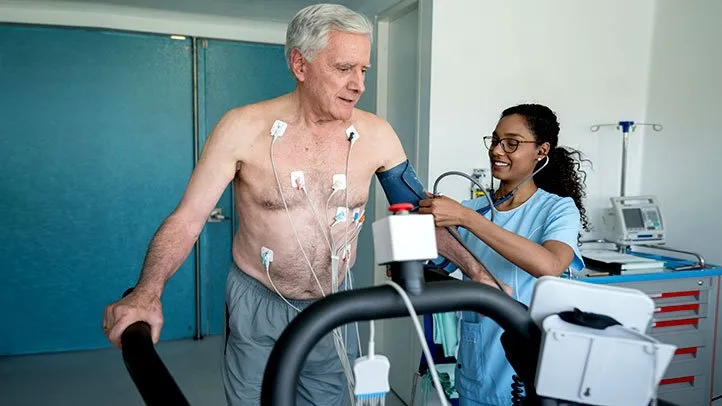Newly diagnosed lung cancer patients don’t necessarily begin treatment immediately, says Nicole Stout, a doctor of physical therapy and the senior director of survivorship and wellness at the American Cancer Society. She notes that there is often a period of at least several weeks in which a fairly intensive prehab program can have measurable effects.
“Many people with lung cancer come in with comorbidities, such as chronic obstructive pulmonary disease and cardiovascular disease, that make them not the best surgical candidates,” says Megan Burkart, DPT, an assistant professor of physical therapy at West Virginia University in Morgantown, West Virginia. “They may be sedentary. They usually have trouble breathing, so they don’t exercise.” For patients who are deemed operable or who are borderline, “Prehab is an exciting place,” she says. And for patients in overall poor health for whom surgery is too risky, prehab has the potential to make it a safer option.
Prehab for lung cancer is kind of like boot camp, says Dr. Burkart: “We have patients doing some form of supervised, monitored aerobic exercise for 20 to 30 minutes, five days a week, at a moderate to vigorous pace.” The aim is to get the person to 60 to 80 percent of their VO2 max, or maximal oxygen uptake, which is a measure of the cardiovascular system’s ability to get oxygen to body tissues.
In prehab for lung cancer patients, a physical therapist or physiotherapist might also engage the patient in breathing exercises and work on posture and range of motion. They’ll also help patients quit smoking, if needed.
Read the full article here




